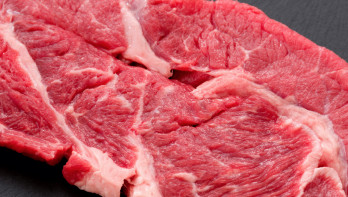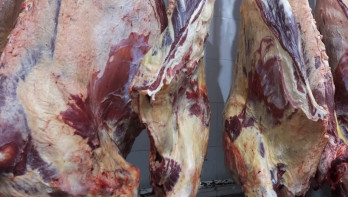Analysis Cattle & Beef
Beef market missed the barbecue boat
The beef market is currently on the weak side. Due to the lack of nice barbecue weather, beef sales are struggling. Not only the price of luxury parts is suffering, but also scraps are not selling well anymore. Additionally, the supply of cattle remains high.
The slaughter price of cattle has been moving sideways for the fourth consecutive week. The P-quality is traded at €3.18 per kilo and the U-quality remains at €4.97.
The beef market is going through a challenging phase. Traders mention that the meat prices are currently under pressure. The demand for luxury parts has been under pressure for roughly a month, but due to expectations of better weather, scraps were selling reasonably well. Products made from scraps such as sausages and hamburgers are popular for barbecues. However, the better weather has not arrived yet. Despite some barbecuing on dry weekend days with temperatures around 18 degrees, the spring barbecue was much less popular than in previous years. As a result, the sales of scraps are currently slow. Market insiders mention that the expected overall increase in demand has not materialized.
Barbecuing is not only low in the Netherlands. The weather across Europe is unfavorable. As a result, meat exports are also weak, as heard in the market. The time for a barbecue revival is running out, as the summer vacation is approaching. During this period, the demand decreases as consumers are on holiday. Afterwards, people generally cut back on spending because they have spent a lot of money on vacation. For a significant increase in demand, the weather needs to improve before that time. However, this does not seem likely. The weather forecasts are currently weak, with a lot of rain expected. This means that an extra boost in the market is literally and figuratively falling through.
Supply not decreasing structurally
Meanwhile, the decline in the number of slaughters is not holding up. In weeks 19 and 21, significantly fewer cattle were slaughtered. In week 19, 8,000 cattle were slaughtered, and in week 21, the number of slaughters decreased to 9,000 cattle. Whereas the slaughter figure in 2024 was more or less consistently above 10,000 slaughters. In week 20, the slaughter figure rose above that point again, and in week 22, even 11,000 cattle were slaughtered. This puts the slaughter figure more than 20% above the five-year average. Over the last five years, around 9,200 cattle were slaughtered during this period.
According to meat traders, there is a clear shift. Livestock traders indicate that fewer dairy cows are being brought in. Earlier this year, extra dairy cows were slaughtered because milk prices were weak and phosphate was expensive. Now that milk prices have somewhat recovered and the surplus cattle have been slaughtered, this source has dried up. Currently, according to livestock traders, mainly calves are being slaughtered.




